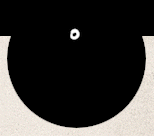
Polina Raiko
1928-2004. Ukrainian self-taught artist, a bright and unique representative of naïve art.
Polina (Pelageia by passport) Raiko was born and lived all her life in the city of Tsiurupynsk (now Oleshky), Kherson region. She had no artistic education and worked as a seasonal laborer on a collective farm or as a hired hand in her neighbors' gardens. She received a pension of 74 hryvnias, which she spent almost entirely on the cheapest paint (enamel), which she bought on the local market.
Polina started painting when she was 69 years old. The impetus was tragic loneliness: her husband and son died, and her beloved daughter died in a car accident.
Polina Raiko painted her own house, summer kitchen, doors, gates, fence, and garage doors. In a few years, the house turned into a fantastic installation. Back then, the neighbors used to say that “she went crazy.”



At first, Polina Rayko and her unusual, bright and vital creative practice attracted the attention of Kherson artists, and later her house of seven small rooms became a place of real cultural pilgrimage. This naïve artist created her own unique universe, which combined Christian and pagan/folk beliefs, sometimes her drawings featured Soviet symbols she was raised with, but the beauty of nature prevailed, and not only what she saw (river of Dnieper floodplains), but also fantastic “leopards”, white peacocks, and koala bears.
In her house, Polina Raiko created her own “iconographic system” of plots and images that describe her earthly life and her idea of life after death. Visitors and admirers of her art were only one consolation for the lonely woman. On the walls of her house she depicted her family, angels among flowers, and the road to paradise. Polina Raiko generously filled the entire space of her home with earthly and otherworldly beauty, healing her pain and leaving no space for emptiness.
Polina Raiko died in winter 2004 but she did it “not like normal people”: she found the last free of drawings surface – it was the back of a mirror, – and painted self-portrait. On this picture she was young and beautiful – and then she passed away.
After the artist's death, her relatives immediately decided to sell the house. Local buyers were not interested in Polina Raiko's artistic heritage, but in the opportunity to expand their land by demolishing the house. The NGO Center for Cultural Development “Totem” insisted on a ban on the sale for 9 months, which, according to the law, were allotted for “preliminary research” of cultural value. After 9 months the house was purchased by a Ukrainian-Canadian couple with the intention of creating a museum, but for many years they did nothing to create a museum, restore or saving the paintings. Meanwhile, the house was deteriorating. The enamel paintings on the clay plaster that covered the walls were cracking and falling off.
November 2021 the paintings of Polina Raiko's unique house were included in the register of cultural heritage sites of local significance finally. That time it was already obvious that Polina Raiko's house is a unique heritage, a world pearl of naïve art. Her artwork is on a par with the art of Niko Pirosmani (Georgia), Grandma Moses (USA), Maria Prymachenko (Ukraine).
Since February 2022, Polina Raiko's house has been on the territory of the Kherson region occupied by Russian troops.
On the night of June 6, 2023, the Russians blew up the Kakhovka hydroelectric power plant, and all the villages adjacent to the Dnieper river were flooded. Oleshky was also under water. Polina Raiko's house was flooded, and the water destroyed more than 60% of the paintings.


















